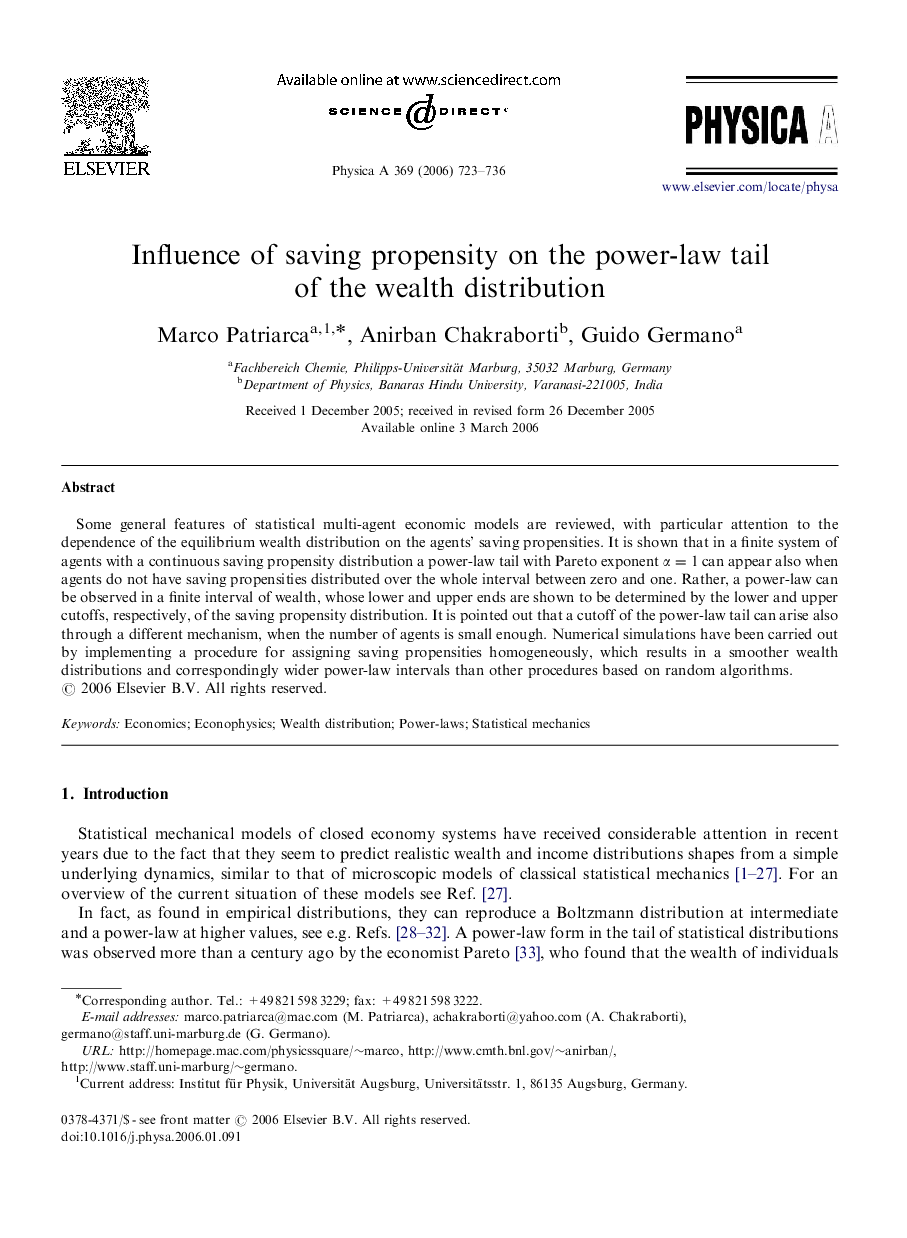| Article ID | Journal | Published Year | Pages | File Type |
|---|---|---|---|---|
| 979753 | Physica A: Statistical Mechanics and its Applications | 2006 | 14 Pages |
Some general features of statistical multi-agent economic models are reviewed, with particular attention to the dependence of the equilibrium wealth distribution on the agents’ saving propensities. It is shown that in a finite system of agents with a continuous saving propensity distribution a power-law tail with Pareto exponent α=1α=1 can appear also when agents do not have saving propensities distributed over the whole interval between zero and one. Rather, a power-law can be observed in a finite interval of wealth, whose lower and upper ends are shown to be determined by the lower and upper cutoffs, respectively, of the saving propensity distribution. It is pointed out that a cutoff of the power-law tail can arise also through a different mechanism, when the number of agents is small enough. Numerical simulations have been carried out by implementing a procedure for assigning saving propensities homogeneously, which results in a smoother wealth distributions and correspondingly wider power-law intervals than other procedures based on random algorithms.
